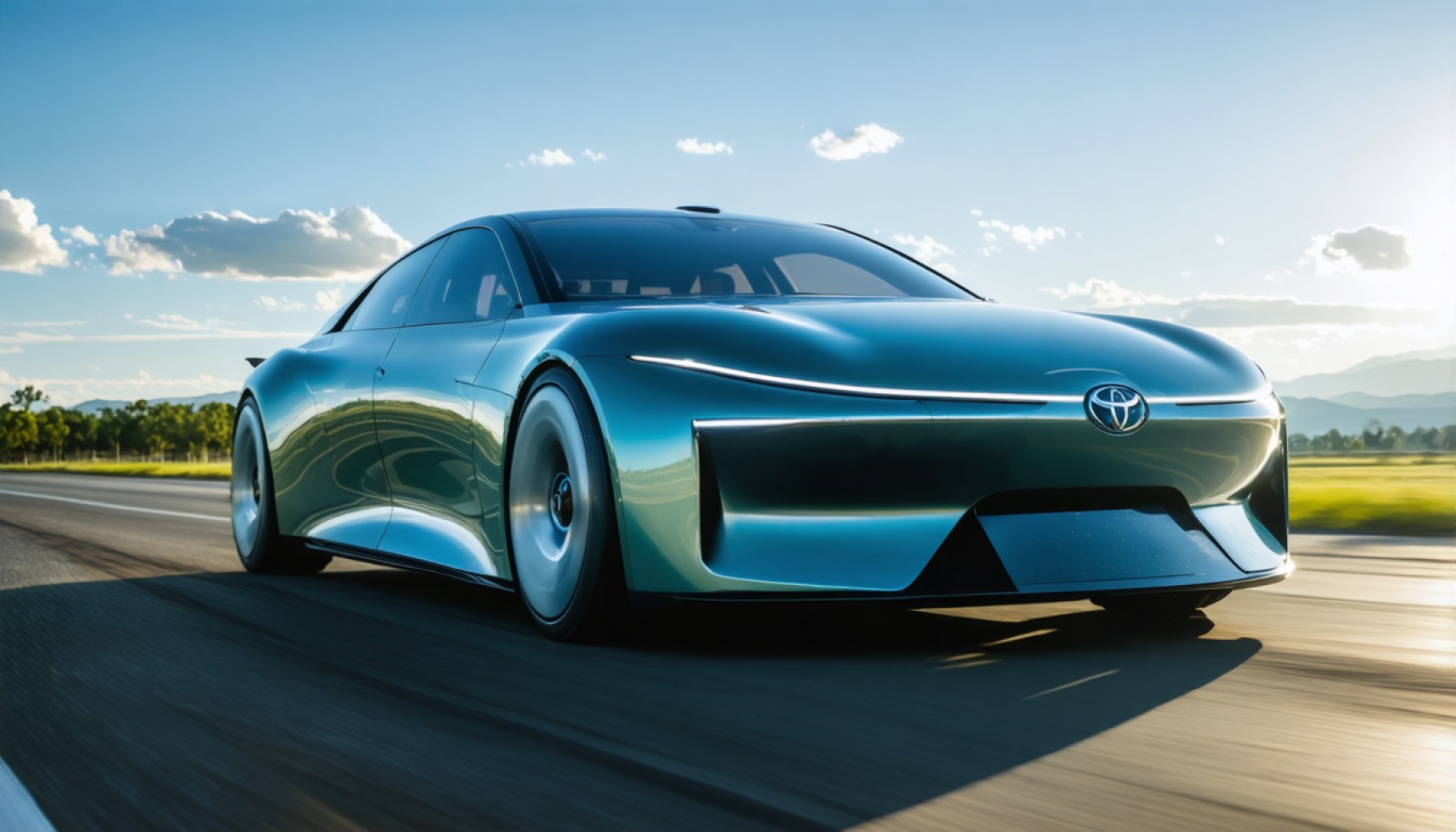- Toyota embraces hydrogen power, collaborating with Hydrogen Refueling Solutions and ENGIE group to lead the electrification race.
- The RHeaDHy initiative plans to revolutionize refueling with efficient hydrogen infrastructure, featuring the innovative ‘Twin Mid Flow’ pump system.
- Toyota aims to reduce refueling times for heavy vehicles to under ten minutes and light vehicles in less than five.
- The company’s strategy aligns with the EU’s goal to install hydrogen stations every 200 km along major roads by 2030.
- Real-world trials with trucks demonstrate up to 600 km of range on a single hydrogen refuel, with potential for 900 km.
- Hydrogen is positioned as a cleaner alternative to batteries, especially where battery power is less effective.
- Toyota’s bold move sparks industry debate on hydrogen as the future of green mobility.
A wave of transformation sweeps through the auto industry as Toyota forges a daring new path in the electrification race, boldly betting on hydrogen. Around the globe, stringent regulations clamp down on combustion vehicles, nudging automakers towards sustainable alternatives. Amidst this pivotal shift, Toyota stands resolute, casting its lot with hydrogen power through a strategic alliance with Hydrogen Refueling Solutions (HRS) and the ENGIE group.
The sweeping landscapes of Europe serve as Toyota’s testing ground, where the company seeks to redefine how we refuel. Central to their vision is the RHeaDHy initiative, a pioneering blueprint designed to bring efficient hydrogen infrastructure to life. At the heart of this endeavor lies the groundbreaking ‘Twin Mid Flow’ pump system. This innovative approach promises versatility and speed, cutting average refueling times for heavy vehicles to under ten minutes and zipping through light car refills in less than five.
Imagine a station where trucks, motorcycles, and cars alike sip hydrogen from a singular source—a vision set to streamline installation across Europe’s busy highways. Aligning with the European Union’s Alternative Fuels Infrastructure Regulation, Toyota’s plan aims to pepper every 200 km of main roads with hydrogen stations by 2030, leaping ahead of regulatory timelines to secure its innovative foothold.
In a real-world trial of its potential, Toyota rolls out the first of these hydrogen initiatives with heavy-duty trucks. Each test run gleams with promise, trucks cruising up to 600 km after just a breath of hydrogen fuel. Industry experts, eyes on the horizon, forecast ranges pushing past 900 km with extended refueling.
Driving this endeavor is a common goal shared by Toyota’s forward-thinking research and industrial collaborations—the concrete vision of an emission-free future. Some in the industry still favor electric batteries for their perceived simplicity, but Toyota, bolstered by allies like HRS, views hydrogen as the linchpin for cleaner transport, especially in regions where battery power falters.
This gamble—a blend of courage and anticipation—poses a tantalizing question: Will hydrogen become the prince of green mobility? As this dramatic chapter unfolds, the world watches. In the story of transportation’s future, Toyota seems keen to write its own bold, green line.
Is Hydrogen the Future of Transportation? Toyota’s Bold Move and Its Implications
Toyota’s Strategic Shift Towards Hydrogen
Toyota’s focus on hydrogen technology represents a significant pivot in the automotive industry’s electrification agenda, with several key facets that were not fully explored in the original source material:
1. Hydrogen vs. Electric Vehicles (EVs):
– While battery electric vehicles (BEVs) dominate headlines, hydrogen fuel cells offer unique advantages such as rapid refueling and energy density suitable for long-haul and heavy-duty transportation.
– Hydrogen fuel cell vehicles (FCVs) can achieve ranges comparable to traditional internal combustion engines, making them ideal for long-distance and commercial vehicles (Møller-Holst et al., 2021).
2. Infrastructure Challenges and Opportunities:
– A significant challenge for hydrogen is infrastructure. Toyota’s partnership with HRS and ENGIE aims to address this by implementing the RHeaDHy initiative across Europe. This includes the Twin Mid Flow pump system, reducing refueling times and allowing for diverse vehicle refueling from a single station.
– The European Union’s support and regulatory frameworks are crucial in establishing a widespread adoption of hydrogen infrastructure, with initiatives like the Alternative Fuels Infrastructure Regulation paving the way (European Commission, 2022).
3. Economic and Environmental Impact:
– Transitioning to hydrogen could reduce reliance on fossil fuels, lowering greenhouse gas emissions significantly.
– Additionally, hydrogen production methods are diversifying, with green hydrogen (produced via electrolysis using renewable energy) emerging as a sustainable alternative.
Real-World Use Cases and Industry Trends
– Heavy Duty and Commercial Vehicles: Hydrogen is particularly advantageous for industries such as logistics and public transport, where the weight and range limitations of current battery technology pose significant challenges.
– Emerging Markets: Countries with abundant renewable resources are exploring hydrogen both as a domestic fuel and a potential export product.
Controversies and Limitations
– Production Costs and Sustainability: Hydrogen production remains expensive, especially for green hydrogen, though costs are predicted to decrease as technology advances.
– Energy Efficiency: Hydrogen fuel cells are less energy-efficient compared to direct battery use, with energy loss during production, transport, and conversion (IEA, 2021).
Market Forecast and Predictions
– Growth Projection: Bloomberg New Energy Finance estimates a rapid hydrogen market expansion, projecting that by 2050, hydrogen could meet 24% of the world’s energy needs under the right conditions.
Pros and Cons Overview
Pros:
– Rapid refueling and long range make hydrogen suitable for diverse applications.
– Potential for zero emissions when produced sustainably.
Cons:
– High infrastructure development costs.
– Current production methods are carbon-intensive.
Actionable Recommendations
– For Consumers: Stay informed about developments and consider hydrogen vehicles, especially if you operate in sectors like transport logistics.
– For Policymakers: Support infrastructure development and invest in research for sustainable hydrogen production.
Conclusion
Toyota’s commitment to hydrogen technology offers an intriguing glimpse into the potential of a hydrogen economy. While challenges remain, the strides being made in infrastructure and technologies like the Twin Mid Flow pump system position hydrogen as a formidable contender in the sustainable mobility race.
For more developments in the hydrogen and automotive sectors, visit Toyota.











